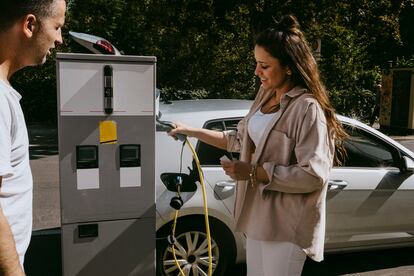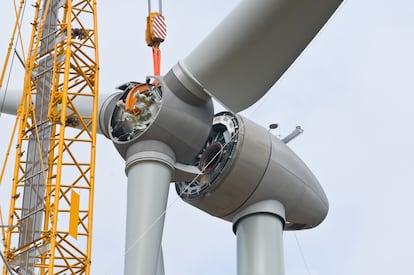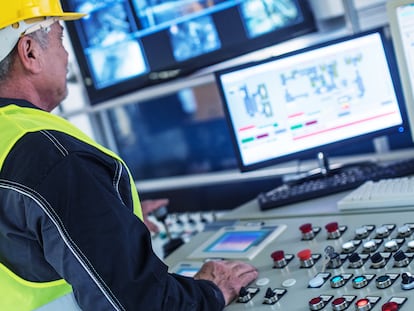Sustainability begins at home
Environmental solutions and innovative technologies are making their way into households, revolutionizing sustainable living practices
At first glance, one of the most striking differences between a newly constructed home and one that was built 30 years ago is the abundance of electrical outlets in each room. These outlets have become increasingly indispensable in kitchens, where an array of small appliances like pressure cookers, fryers, rice cookers and food processors are used daily. People also need to charge multiple phones, tablets, computers and other electronic devices. Lastly, steadily rising summer temperatures have made air conditioning essential in many homes.
Homes rely heavily on electricity, but surprisingly, its usage has actually decreased in recent decades, according to the U.S. Energy Information Administration. The average U.S. household now consumes 33.5% less energy than in 1980. The reasons are better insulation and construction materials, as well as the increased efficiency of both large and small appliances, water heaters and light bulbs.

To achieve environmental sustainability, we need to focus on improving the efficiency of appliances and transitioning to a greener grid by eliminating greenhouse gas-emitting components from electricity generation. This crucial change can begin right at home.
Avangrid is a leading sustainable energy company that serves 3.3 million utility customers across the Northeast. Avangrid CEO Pedro Azagra explained that the company is helping their customers reduce their carbon footprint in multiple ways, and one of the key components is the Emissions Reduction Strategy “which includes increasing the amount of clean energy that we produce and provide to our customers through renewables sources like wind, solar, and green hydrogen.” The company’s near-term goal is energy to produce 10 Gigawatt of emission-free energy by 2025 and reduce the emissions’ intensity by 70% by 2030 compared to 2015.

“We are helping the customers to reduce deer carbon footprint in many different ways.” The company has created several programs and incentives for the customers to increase energy efficiencies, like the one that helps with the installation of heat pumps or electrical vehicle charging stations, “to help reduce their costs and environmental footprints.”
Pedro Azagra
Passive houses are the best example of sustainable homes, says Hammad Chaudhry, who loves to talk about them. Chaudhry — Avangrid’s senior manager for demand-side programs and conservation — says the main features of these extremely efficient homes are heat pumps, extensive insulation, airtight construction, temperature control, high-quality windows and ventilation. These components reduce the need for cooling or heating a room by almost 90%, thereby minimizing their environmental impact. This significantly reduces overall consumption, since air conditioning typically accounts for 51% of total household electricity usage.
The optimal time for efficiency since they ‘learn’ the daily behavior of people in the home,” said Chaudhry. “For example, they can activate the heat pump an hour before you get home from work so the temperature is just right for you.” Heat pumps are the most energy-efficient way to control the temperature of a home because they use much less electricity and can be used to both heat and cool, unlike electric heaters. These devices can function efficiently even in extremely cold temperatures, which is particularly important in certain areas of the Northeast where Avangrid operates. Incentives are available to homeowners who install this technology once they have been certified for extremely cold weather.
The 2022 Inflation Reduction Act provides financial aid to customers who want to install heat pumps, which are slightly more expensive than traditional heating systems and air conditioners. These costs can also be offset through Avangrid’s financial aid programs. Before installing a heat pump at home, Chaudhry says you should make sure you have the proper insulation so you can maximize its benefits. Avangrid contractors can assess your home and provide recommendations on how to minimize heating and cooling loss. Older buildings usually need new and better insulation. Selecting a heat pump that has the right capacity for your home is also important.
To achieve housing efficiency, integrate renewable energy sources like solar panels or batteries. They not only create a sustainable living environment but also offer attractive incentives.
From the grid to the road
The optimal time for charging an electric car is when electricity use is at its lowest. This sustainable practice can also save money since electricity during off-peak hours is less expensive. “Nearly 30% of greenhouse gas emissions come from transportation,” said Christina Ficicchia, manager of Avangrid’s Smart Grid program, “so addressing this issue will contribute to alleviating climate-change problems.”
Increased production of more stylish electric vehicles (EV), coupled with efforts by companies like Toyota to develop advanced engines that can travel 745 miles on a single charge, and install charging facilities along highways, are changing public perception of EVs. According to Cox Automotive, in the third quarter of 2023, over 300,000 EVs were sold, a nearly 50% increase from the previous year. EVs currently hold a 7.9% market share.

“EV emissions depend on how the vehicle was manufactured, and the energy we put into the grid to charge them. But it’s a solution that will become more sustainable over time,” said Ficicchia. “Adding more renewable energy supply to our distribution grid is inevitable. Likewise, the proliferation of EVs and the development of the necessary charging-station infrastructure are just a matter of time.”
California and New York have passed legislation to ban non-electric and hybrid car sales starting in 2035. Ficicchia says this move will greatly boost consumer adoption of these vehicles and show the automotive industry that manufacturing EVs will be profitable due to future demand.
Commercial vehicle fleets, like Amazon’s delivery trucks, and large, high-emission freight trucks are also undergoing a transition. Truck emissions are comparable to 10 passenger vehicles, so moving away from gasoline and diesel engines will have a significant impact.
Ficicchia acknowledges that increased coordination is critical to this process. Transitioning to full fleet electrification will take time due to fleet size, technical requirements, costs and the need to increase production and grid capacity — the electrical grid must expand to meet future energy demand.
“Substations take years to build — increased collaboration from our customers will help ensure available capacity,” said Ficicchia, who advises users to proactively develop their transition plans, allowing ample time to get ready for the change.

Both Ficicchia and Chaudhry acknowledge that the transition comes with a cost, which requires support from both the private and public sectors. Municipalities will require additional incentives and investment during the initial stages of the transition, when the highest costs are incurred.
The Inflation Reduction Act introduced various incentives for the energy transition, but Ficicchia believes it’s also important to act quickly on environmental issues. “And to expedite the transition of transportation,” said Ficicchia, “innovative economic solutions will play a pivotal role.”
The Unique Hotel Marcel
The Hotel Marcel in New Haven, Connecticut (a Hilton property) is one of a kind. The first building in the world with over 100 rooms to achieve passive building certification, this striking Bauhaus-style building completed in 1970 has undergone a major renovation recently. Architect and property owner Bruce Redman Becker has successfully transformed it into a sustainable marvel, operating solely on renewable energy with zero emissions. The building, which once housed the offices of Armstrong Rubber Company and later Pirelli Tires, is now a model for how an old building can be renovated with new technology. Avangrid’s Hammad Chaudhry says the building was equipped with all the technology needed to achieve its sustainability and efficiency goals, including batteries for energy storage. “This is the future,” said Chaudhry.
CREDITS
Sign up for our weekly newsletter to get more English-language news coverage from EL PAÍS USA Edition


